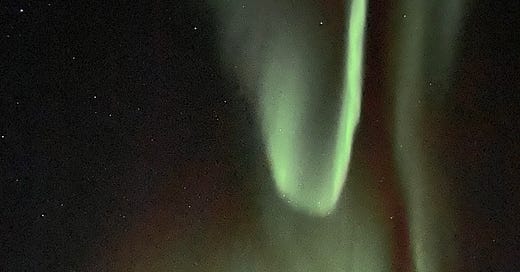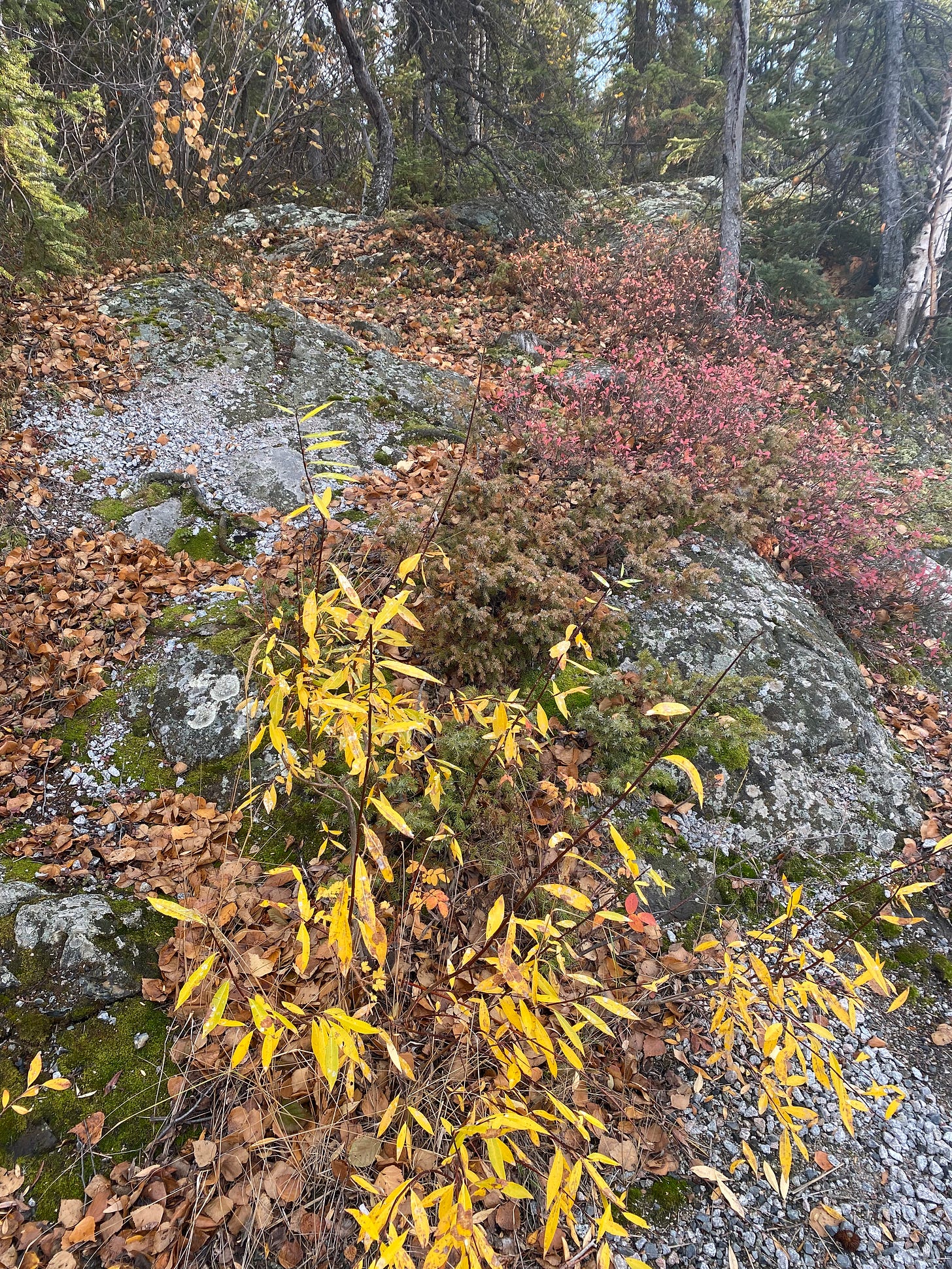A friend recently told me she found the world very dark these days. I’d been thinking the same thing. A month later, it looks darker still. I’ve spent more time trying to figure out what is happening in the world than thinking about music. The frequency of Song a Day (or week, or month) is falling into the last of those three categories, as a result.
I just returned from a long-planned trip with extended family to Yellowknife in the Northwest Territories. The goal was to see the northern lights, and for a while, it seemed like the trip might not happen at all, as the city was first evacuated, then buried in smoke, even a couple of weeks after residents returned. I was also worried we wouldn’t see the lights anyway, since while September is prime time for viewing, October – which worked for various family reasons – is on the bubble.
But, no! We had wonderful weather. “It’s like August,” said someone we walked past on a hiking trail on Thanksgiving Sunday. (It was about 14 degrees C. Clearly a local.) Skies and lakes were brilliant blue, the top of the Canadian Shield shone with reds and yellows, and, most importantly, the skies delivered, spectacularly, for two separate nights.
Resting in the hotel room before heading out for light viewing at 10 pm with other, mostly north Asian, tourists, (China, Japan, and South Korea were all strongly represented), I flipped around TV channels and past the endless hockey games (yes, it’s started again, already) and landed on the local cable channel, where I caught a few seconds of a charming video of a poppy song by young Indigenous artists standing in the snow outside a store in the same kind of temporary-now-permanent building common to communities of the Canadian North.
I know, because this was not my first trip north of 60. In 2006, I spent a couple of weeks up north right around the summer solstice, first visiting a friend in Alaska and then meeting a friend to hike in the Yukon. I didn’t have cell phone service and internet access while camping in the Yukon and was limited to an occasional hasty check on whatever shared terminal I found along the Alaska Highway. By the end of the trip I had become accustomed to being in a place with few people and lots of space. It felt jarring to return home. This time, it was a quick trip, I was with eight members of my family, and I had 3G service until the end of the highway. It wasn’t light all night, either. It felt different.
The next night I turned on the TV again and caught the entire video of “Gateway”. I didn’t go as far east as Liard First Nation, where the performers in the song live, on my Yukon roadtrip – and now regret not seeing the “sign forest” in Watson Lake that’s featured in the video. The lyrics are about resilience, with a first verse by a young single mother determined to do right by her baby and the second, by a youth in a Hogwarts t-shirt, about the abuse he grew up with. There’s rhyming about the pain of bullying and slut-shaming. A serious-looking boy reads Cormac McCarthy’s The Road. A young girl talks about how secure she feels hunting on the land with her father.
The video is the product of a project called N’we Jinan, which sends a mobile studio featuring a music producer and a videographer to First Nations communities across Canada to spend four days learning about kids’ stories and important places and then help them turn it into music and an accompanying video.
“Gateway”, the Liard First Nation production I came across on NWT cable, is five years old already. There have been a number of other songs produced before and since, available on Soundcloud and a YouTube channel. They’re all different and worth watching – the videos are a virtual tour of First Nations from coast to coast. I’ll highlight what looks to be the sole NWT contribution, “Never Say Die” from the town whose motto this is. Aklavik, on the west side the Mackenzie Delta, floods regularly and the population was moved to newly created Inuvik in the 1950s. But some residents decided not to leave, and Aklavik still stands: Never Say Die! Much of the video is shot in front of the community’s ice road, open during winter months – the only road access to the hamlet. I’d always been curious about what they look like!
But back to “Gateway”, my entry point into these N’we Jinan videos. It’s stuck with me over the last few days, I think, because the words of the youth from Liard First Nation are full of hope — as the darkness of autumn returns, and in these dark days:
It's dark outside but there’s a gateway
Give me light and I will show you what’s inside
We dance in the shadows
But the light will come again.






Lovely piece, Molly! I’ll have to lookup the video
I definitely need to venture beyond the narrow band of cities along the border.